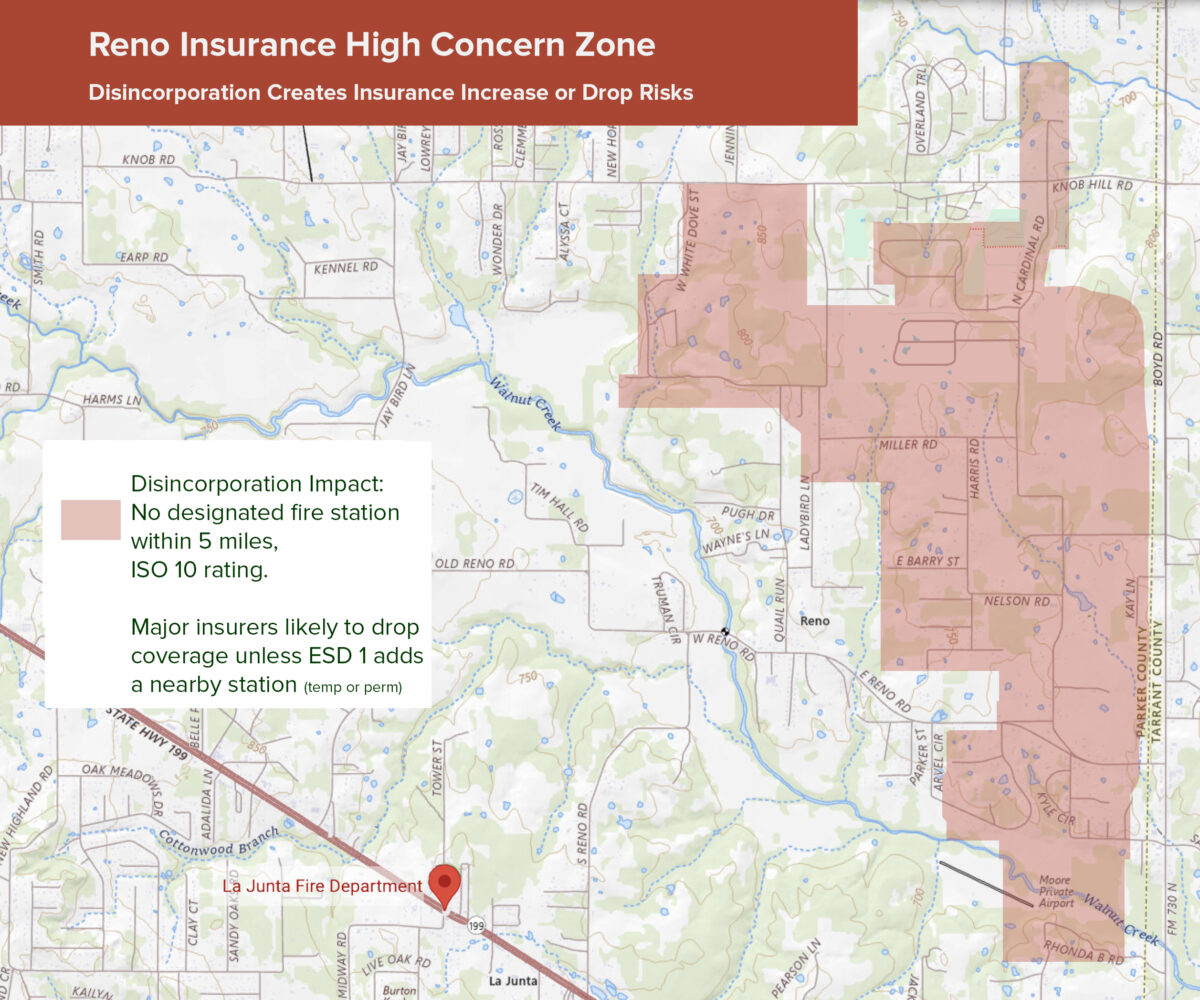Fact Checks
Putting the Record Straight on Disincorporation
We’re cutting through the noise. This page will be regularly updated with verified information to clarify misleading or inaccurate claims surrounding the disincorporation of Reno. Every fact-check includes documented sources so you can make an informed decision on May 3—based on truth, not speculation.
Disincorporation claim: We have spoken to two water companies who are very interested in acquiring the water department and have informed the mayor (Facebook Reno Parker County Chat Group, March 25)
Disincorporation claim 2: We have spoken to Springtown Water and they are interested.
While this effort may seem proactive, it’s ultimately a moot point. This is one of the key dangers of disincorporation: we—residents, city leaders, even the mayor—lose all control over who ends up with our water system.
Under Texas Property Code §113.010, once a city disincorporates, a politically appointed trustee is given sole authority to contract, sell, or grant options for trust property—including the municipal water system. That decision is no longer ours to make. (Source: Texas Property Code)
Random, non-elected citizens have no binding authority or power to determine our future water source. Again, a politically appointed trustee will be in charge and must consider all bids and strongly consider which company allows the city’s debt to be most reduced.
Disincorporation claim: The Briar Reno Fire Department can be the fire department that places all of Reno within the 5 mile radius of a fire station. (Facebook Reno Parker County Chat Group, March 30)
This is especially important for residents in the northern part of Reno:
If your home is more than 5 miles from a fire station, your ISO rating will be a 10 (on a scale where 1 is best and 10 is worst). An ISO 10 rating often leads major insurance companies—like Farmers and Allstate—to drop your homeowner’s coverage. If that happens and your mortgage company sees that you no longer have insurance, they may initiate foreclosure proceedings to protect their investment. that you have no homeowner’s insurance, there is a possibility that they will foreclose on your home.
The Briar Reno Fire Department CANNOT be the department considered to be within 5 miles of you. A nearby fire station that is not the authorized responder does not count toward the PPC distance requirements. Simply being within 5 miles of some fire station is not enough – it must be within 5 miles of the station that actually serves the property. Verisk (ISO) analysis shows that “the nearest fire station isn’t always the responding station”, since jurisdictional boundaries often mean the closest station by distance isn’t the one dispatched. (source verisk.com)
The only way to avoid an ISO 10 is if ESD1 places a temporary or permanent station in the northern part of Reno.
Our position is this: Because homeowners are the ones bearing the risk, ESD1 should demonstrate its readiness by placing a visible, temporary station in the area before the May 4 vote. If they do not, voters should consider voting against disincorporation in order to give time to see whether ESD1 can establish a station before a potential November vote. That would allow voters to make an informed choice between continued service from BRFD or transitioning to ESD1. The burden of proof should be on ESD1 to act—not on homeowners to hope they follow through.

Disincorporation claim: The county can safely keep 1 acre restrictions in place. (Facebook Reno Parker County Chat Group) This is a risky gamble on two fronts: 1. A current Texas Senate Bill on the floor would blow apart the ability of a county to do anything regarding zoning and would undo any existing restrictions. Here is the proposed bill by a Republican Senator in a Republican Majority Senate:
Azle News Article on Water Accuracy Check
https://www.theazlenews.com/article/347,what-happens-to-reno-s-water-if-disincorporation-passes (Appeared April 9, 2025)
What the Article Gets Right
1. Accurately states that Springtown and Walnut Creek are not ready to assume control.
2. Notes that the county judge and district court will control decisions, not residents or the mayor.
3. Explains that the current tax rate remains until all debt is paid.
Here is What the Article Lacks, Omits, or Gets Wrong
1. Misleading Impressions of Readiness
“Too early in the ballgame…” [Springtown]
“Would not be ideal for Walnut Creek…” {Walnut Creek]
This contradiction is downplayed, leading readers to believe solutions are in place when they are not.
2. Understates Risks of the Interim Period
It touches on the receivership process but presents it as automatic and orderly, not acknowledging that:
- A receiver must be appointed by a court.
- The appointment could take months.
- The receiver’s primary job is to sell the system to offset city debt—not ensure affordable, quality service..
The omission of potential rate hikes, delayed repairs, loss of local water operator jobs, or lack of grant access paints a rosier picture than the legal realities suggest.
3. Complete Lack of Balance or Pro-City Representation
Vote Against Disincorporation on May 3.
Early Voting - April 22-29
Register to Vote Before April 3.
Can I vote AGAINST disincorporation but FOR the tax reduction?
YES! The most important thing is to keep your voice and local control by saving the City of Reno.
